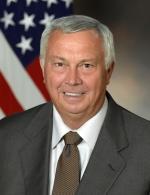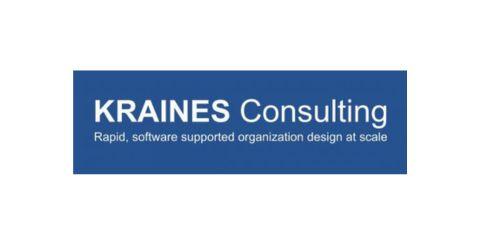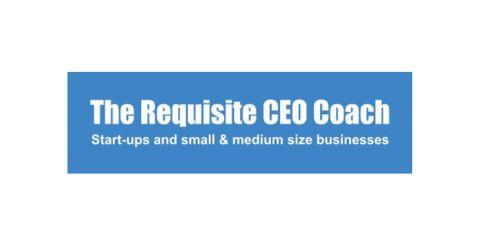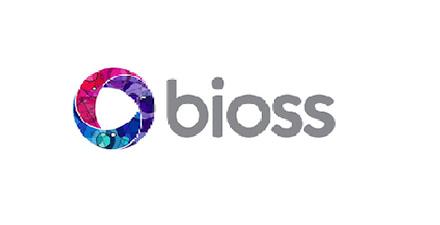Executive Leadership
A Practical Guide to Managing Complexity
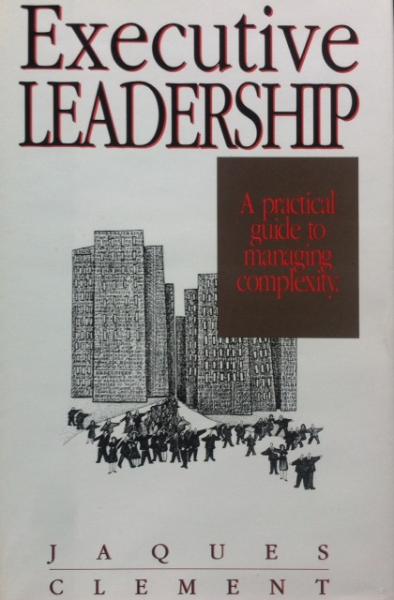
Obtain this book
Book Review: Executive Leadership - Elliott Jaques & Stephen Clement
Introduction
"Executive Leadership: A Practical Guide to Managing Complexity" by Elliott Jaques and Stephen Clement represents a groundbreaking work in organizational theory and leadership development. The book, one of Jaques' sixteen publications, builds upon his previous work "Requisite Organization" and offers a scientifically-grounded approach to understanding organizational dynamics and leadership effectiveness.
Elliott Jaques, a qualified psychoanalyst with over 40 years of practical experience working with organizations and social institutions, brings his extensive background as Professor Emeritus of Social Science at Brunel University and Chair of SST, Ltd. His co-author, Stephen D. Clement, a retired U.S. Army Colonel and President of Organizational Design, Inc., contributed significant expertise in leadership development, having been instrumental in developing the U.S. Army's leadership training doctrine.
The book has garnered strong endorsements from corporate leaders, including David Whitwam, former Chairman and CEO of Whirlpool Corporation, and Mark Kaminski, President of Commonwealth Aluminium, who called it a "scientific approach to management based upon excellent research and lifetimes of devotion." Ralph Olmo, former Chief Finance Officer of the U.S. Department of Education, described the work as containing "stunning discoveries about human capability, creativity, and problem solving" that would have far-reaching consequences for society.
Main Themes
Human Capability and Cognitive Processing
At the core of Jaques and Clement's work is a revolutionary framework for understanding human cognitive capability. The authors present a systematic approach to measuring and categorizing how individuals process information and solve problems, proposing that people operate at different levels of cognitive complexity.
The book introduces a detailed taxonomy of cognitive processing patterns that manifest in how people approach problems and construct arguments. These patterns are observable in everyday discussions, policy debates, and decision-making processes. The authors argue that by understanding these patterns, organizations can better match individuals to roles that align with their cognitive capabilities.
From the text fragments, we can see Jaques and Clement outline several cognitive categories, including:
- Serial Processing (Category C-3): Characterized by conceptual arguments organized as conceptualized alternative sequences leading to alternative strategies. Individuals operating at this level can specify values concepts, link them to broader social and ethical developments, and elaborate on conceptual arguments, but may not connect various strategies in parallel.
- Other categories (not fully detailed in the fragments) appear to represent different levels of cognitive complexity with varying abilities to handle conceptual information, strategic thinking, and parallel processing of ideas.
The authors contend that these cognitive patterns are not merely academic constructs but observable phenomena that manifest in how people articulate their thoughts and construct arguments, even in unstructured, heated discussions where individuals are "thinking on their feet."
Requisite Organization and Managerial Hierarchy
Jaques and Clement present a model of organizational structure based on the concept of "requisite organization" - a scientifically derived approach to organizational design that aligns with natural human capabilities and work complexity. This model:
- Rejects traditional notions of "charismatic leadership" in favor of a more systematic understanding of managerial accountability and authority.
- Proposes that organizations should be structured in a way that matches role complexity with the cognitive capabilities of individuals.
- Outlines clear distinctions between management and supervision roles, with specific accountabilities and authorities assigned to each.
Supervisory Leadership
The book provides detailed insights into the role of supervisors within organizations, distinguishing it clearly from management:
- Supervisory Role Definition: Supervisors are assigned tasks by managers but are not accountable for the outputs of those they supervise. Rather, they are accountable for maintaining face-to-face oversight and providing immediate guidance and feedback.
- Task Assignment and Accountability: While managers are accountable for assigning tasks and holding subordinates accountable for outputs, supervisors play a crucial role in ensuring work is performed correctly during shifts.
- Feedback and Performance Appraisal: Supervisors provide ongoing feedback and make observations about employees' performance, but formal evaluations remain the manager's responsibility. This creates a system where supervisors contribute valuable insights without being placed in the uncomfortable position of being perceived as "spies."
- Context Understanding: Though managers are accountable for providing context for tasks, supervisors must understand this context thoroughly enough to explain it to those they supervise.
The authors emphasize that this delineation of responsibilities creates a more effective organizational structure where accountability is clear and supervisors can focus on supporting employees without the burden of ultimate accountability for outputs.
Personal Effectiveness Appraisal
The book presents a structured approach to personal effectiveness appraisal:
- Supervisors make ongoing observations about supervisees' effectiveness during shifts and provide immediate feedback.
- These observations are documented and shared with managers, who maintain ultimate accountability for formal performance evaluations.
- The system is designed to encourage continuous improvement and innovation rather than simply monitoring compliance.
- Clear communication about the supervisor's role in this process helps prevent tension and preserves productive relationships.
This approach recognizes the practical reality that first-line managers with numerous subordinates or those managing across multiple shifts cannot directly observe all employee performance, making supervisors' observations invaluable to effective management.
Key Insights
The Scientific Basis of Leadership
Perhaps the most significant contribution of "Executive Leadership" is its rejection of leadership as an art form dependent on charisma or personality, instead positioning it as a science with measurable components and predictable outcomes. The authors argue that effective leadership stems from properly aligned organizational structures that match individual cognitive capabilities with role requirements.
Mark Kaminski's endorsement captures this sentiment well: "Burn all your other management books; they are only placebos... Jaques and Clement provide a scientific approach to management based upon excellent research and lifetimes of devotion."
Cognitive Capability as the Foundation of Talent Management
The book establishes cognitive processing capability as the fundamental metric for talent management and leadership development. By understanding how individuals process information and construct arguments, organizations can:
- Match people to roles that align with their natural cognitive strengths
- Develop targeted leadership development programs
- Create succession planning based on observable cognitive capabilities
- Design organization structures that optimize human potential
This approach represents a departure from traditional competency models or personality-based leadership frameworks by focusing on measurable cognitive patterns.
Clear Delineation of Management vs. Supervision
The book offers exceptional clarity in distinguishing between management and supervisory roles:
- Managers are accountable for outputs and have the authority to assign tasks and hold people accountable for results.
- Supervisors are not accountable for the outputs of those they supervise but rather for maintaining face-to-face oversight and providing immediate guidance and feedback.
This distinction helps resolve a common source of organizational confusion and conflict by establishing clear boundaries of accountability and authority.
The Concept of "Hollow Language and Ideas"
Though only briefly mentioned in the available fragments, the authors introduce the concept of "hollow language and ideas," suggesting an analysis of how empty rhetoric or conceptual jargon can mask substantive thinking. This appears to be part of a broader examination of how to distinguish between genuine cognitive capability and mere verbal fluency.
Practical Implementation of Theory
The book bridges theoretical concepts with practical application, offering specific guidance on:
- How to structure supervisory relationships
- Methods for conducting performance appraisals
- Systems for task assignment and accountability
- Approaches to continuous improvement
This practical orientation makes the book valuable not just as a theoretical framework but as a guide for organizational transformation.
Implications for Organizational Design
The implications of Jaques and Clement's work extend beyond individual leadership development to comprehensive organizational design:
- Hierarchical Structure: Rather than flattening organizations, the authors argue for properly designed hierarchical structures that align with natural cognitive capabilities.
- Role Clarity: Clear delineation of roles, authorities, and accountabilities becomes paramount for organizational effectiveness.
- Talent Development: Organizations should focus on developing talent based on cognitive capability rather than solely on technical skills or experience.
- Performance Management: The approach to performance appraisal shifts from subjective evaluation to a system based on observable cognitive capabilities and outputs.
Relevance to Modern Organizations
While written in 1991, the book's principles remain highly relevant to contemporary organizational challenges:
- Complexity Management: As organizations face increasing complexity, the ability to match cognitive capabilities to role requirements becomes more critical.
- Talent Wars: In an era of fierce competition for top talent, having a scientific approach to identifying and developing leadership potential offers a competitive advantage.
- Remote Work: Even as work arrangements evolve, the fundamental principles of accountability, authority, and cognitive capability remain essential to organizational effectiveness.
- AI and Automation: Understanding the unique cognitive capabilities that humans bring to organizations becomes more important as routine tasks are increasingly automated.
Critiques and Limitations
Some potential limitations of the approach include:
- Measurement Challenges: Accurately assessing cognitive capability in practical organizational settings may be difficult.
- Cultural Context: The model may need adaptation for different cultural contexts where hierarchical relationships are viewed differently.
- Change Management: Implementing such a systematic approach to organizational design would require significant change management efforts.
- Balance with Other Factors: While cognitive capability is crucial, other factors like emotional intelligence, cultural fit, and technical expertise also play important roles in leadership effectiveness.
Conclusion
"Executive Leadership: A Practical Guide to Managing Complexity" represents a paradigm shift in our understanding of leadership and organizational design. By grounding leadership in observable cognitive capabilities and establishing clear principles for organizational structure, Jaques and Clement offer a comprehensive framework that challenges conventional wisdom about leadership development and organizational effectiveness.
For corporate executives and senior organization design consultants, the book provides both a theoretical foundation and practical guidance for building more effective organizations. Its scientific approach to management, based on decades of research and practical application, offers a refreshing alternative to leadership theories based primarily on personality or style.
As David Whitwam noted, this approach "doesn't make my work any easier, but it certainly adds value to the effectiveness of our leadership development efforts!" This sentiment captures the essence of what makes this book valuable - it does not offer quick fixes or simple formulas, but rather a comprehensive and scientifically grounded approach to the complex challenge of organizational leadership.
The enduring relevance of Jaques and Clement's work is perhaps best captured by Ralph Olmo's prediction that "in the century ahead, this work will surely stimulate debate and social movements with far-reaching consequences." Indeed, their insights into human capability, cognitive processing, and organizational design continue to influence thinking about leadership and organizational effectiveness more than three decades after publication.
For those willing to engage with its depth and complexity, "Executive Leadership" offers a transformative perspective on how to build organizations that maximize human potential and effectively manage complexity in an increasingly challenging business environment.


